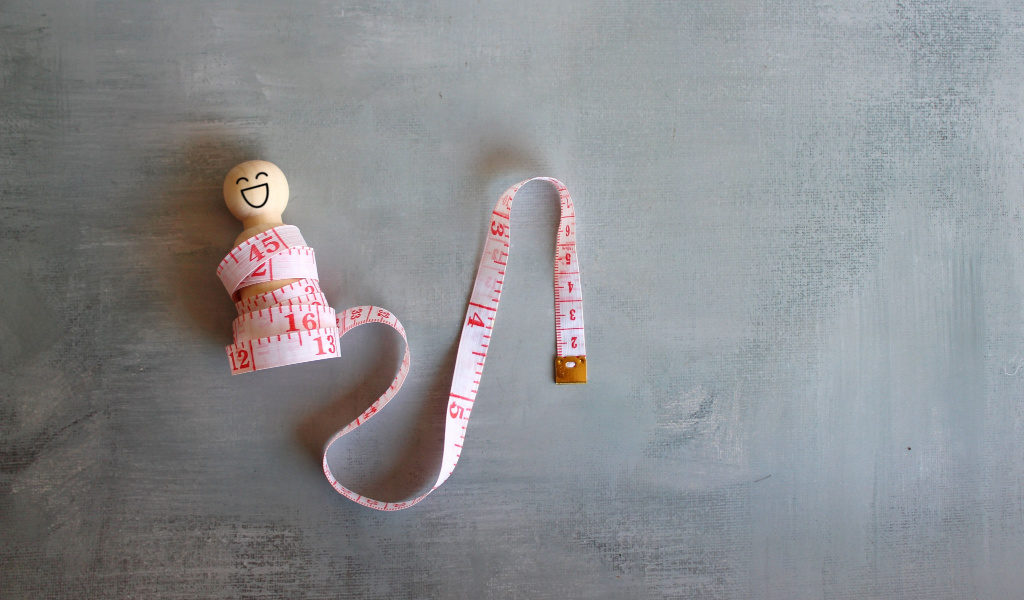There’s no denying that if you stepped on the scale today, you’d weigh a lot more than you did 20 years ago. This is the reality in most of our cases, but it’s also probably true that your “ideal weight” has also gone up a few in number. A recent Gallup poll discovered that 60% of Americans thought that their weight was “just right”, while 60% of the population are actually overweight or obese.
A lot of people who are overweight might describe those extra few pounds as “happy weight”, but is it the same thing as “healthy weight”? How close are the two and what does it all mean?

Is It Unhealthy to be Overweight?
A 2013 study published in The Journal of the American Medical Association revealed that people who were up to 30 pounds overweight were not any more likely to die earlier than people at a normal weight. This was the catalyst that instilled the idea that being overweight isn’t unhealthy – and the idea still persists in society to this day.
However, upon further investigation, it turned out that the study had some major flaws in its execution. In reality, “happy weight” may not be so healthy after all. And there have been decades of research that followed that actually proves this.
Obesity is also linked to a plethora of health conditions from diabetes and high blood pressure to dementia and even certain types of cancers. And these are not temporary conditions – they are ones that have long-lasting impacts and some of them can even result in death. In fact, even an increase in a single skirt size between your mid-20s and mid-50s can increase your risk of developing breast cancer after menopause.
“These are diseases you have to manage not just for a few months, but for a lifetime,” says dietitian Rachel Brandeis. “They impact your health, wallet, and day-to-day activities.”
Your happy weight isn’t just potentially harmful to how long you’ll live, but how well you spend those days, says Brandeis. Not only can conditions like cancer and high blood pressure result in premature death, but you’ll also spend your days alive in discomfort and making trips to and from hospitals.
But she says that people still find it difficult to grasp the idea and end up “shocked” when they step on those scales. However, all hope is not lost! There are certain habits that you can instill in your daily life that can help bridge the gap between your happy weight and your healthy weight.
How to Close the Gap Between Your Happy Weight and Healthy Weight
Know Your Body
The first step to taking control of your body is to know everything about it – which, contrary to popular belief, you aren’t very good at. The first investigation into your body can be checking your BMI or Body Mass Index. BMI is calculated using your height and weight along with your age and gender and is a good way to help measure body fat.
However, Sally Stieghan, a registered nurse and dietitian from Atlanta, says that it is only a guess at the correlation between your weight and health. People with certain body types cannot rely solely on their BMI. For instance, the BMI for someone who is muscular can wrongly indicate excess body fat. And for older adults with less muscle mass, it can incorrectly understate body fat.
It may be more accurate to base your ideas on waist size – especially for those who are a bit more muscular. The right way to measure yourself is with a tap around your waist, just above the belly button. The ideal waist sizes are 35 inches for women and 40 inches for men. If you find that yours is more than that – it might be time to make some changes in your lifestyle!

Set Achievable Goals
For a lot of people, it may seem impossible to achieve their “ideal weight”. This is why a lot of doctors don’t even like to talk about it. A big number like that can demotivate people from even trying, so it’s better to set smaller, more achievable goals.
Brandeis suggests aiming low, and Stieghan agrees. Even a 7-10% weight loss can make a big difference in your overall health and metabolism, says Brandeis. And once you reach that first 10%, the next 10% won’t seem as daunting. Plus, knowing that you actually achieved what you set out to do in that first step will serve as motivation to keep going.
Never Give Up
You may think that it’s too late to start now, but that’s never the case. No matter how old you are, or how many pounds you need to make your happy weight your healthy weight, you can do it if you put your mind to it.
And that’s not just words on a screen. There has been actual research that shows that you can increase lean muscle mass and maintain a lower body fat even in your 80s! The study also found that doing so helped improve balance and stability, which helped prevent broken bones.
Make Changes to Your Diet
Diet is the most important aspect of weight loss, and in my opinion, even more so than exercise! Making a few conscious changes to your diet can go a long way in helping you get to your ideal weight.
Make sure your meals are enriched with fresh and whole foods. Aim to eat at least 5 servings of fruits and vegetables a day. Not only are fresh foods nutritious, but they also help fill you up – making it less likely for you to overeat. At the same time, you should also avoid sugary drinks and fatty foods. These are calorie-dense and offer very little in terms of nutrition!
Portion control is also a good way to keep track of the food you eat. Serve yourself a small portion of food so you don’t end up feeling obligated to eat more than you need just because it’s already on your plate. You can always go back for more if you feel hungry.




